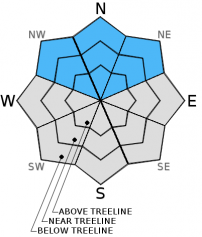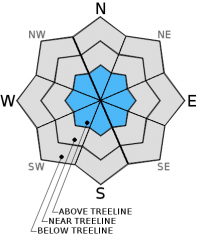| Thursday | Thursday Night | Friday | |
|---|---|---|---|
| Weather: | Mostly cloudy with a slight chance of snow | Mostly cloudy becoming partly cloudy overnight | Partly cloudy with a slight chance of snow in the afternoon |
| Temperatures: | 34 to 39 deg. F. | 23 to 31 deg. F. | 38 to 43 deg. F. |
| Mid Slope Winds: | Southwest | Southwest | Southwest |
| Wind Speed: | 10 to 20 mph with gusts to 30 mph | 15 to 25 mph with gusts to 35 mph | 15 to 25 mph with gusts to up to 35 mph |
| Expected snowfall: | trace to 0 | 0 | 0 |
| Thursday | Thursday Night | Friday | |
|---|---|---|---|
| Weather: | Mostly cloudy with a slight chance of snow | Mostly cloudy becoming partly cloudy overnight | Partly cloudy with a slight chance of snow in the afternoon |
| Temperatures: | 29 to 36 deg. F. | 21 to 28 deg. F. | 33 to 40 deg. F. |
| Ridge Top Winds: | Southwest | Southwest | Southwest |
| Wind Speed: | 20 to 30 mph with gusts to 40 mph | 20 to 30 mph with gusts to 40 mph | 35 to 45 mph with gusts to 60 mph increasing to 45 to 50 mph with gusts to 85 mph in the afternoon |
| Expected snowfall: | trace to 0 | 0 | 0 |


























